Humberto Sossa
Polyhedral Object Recognition by Indexing
Nov 21, 2023Abstract:In computer vision, the indexing problem is the problem of recognizing a few objects in a large database of objects while avoiding the help of the classical image-feature-to-object-feature matching paradigm. In this paper we address the problem of recognizing 3-D polyhedral objects from 2-D images by indexing. Both the objects to be recognized and the images are represented by weighted graphs. The indexing problem is therefore the problem of determining whether a graph extracted from the image is present or absent in a database of model graphs. We introduce a novel method for performing this graph indexing process which is based both on polynomial characterization of binary and weighted graphs and on hashing. We describe in detail this polynomial characterization and then we show how it can be used in the context of polyhedral object recognition. Next we describe a practical recognition-by-indexing system that includes the organization of the database, the representation of polyhedral objects in terms of 2-D characteristic views, the representation of this views in terms of weighted graphs, and the associated image processing. Finally, some experimental results allow the evaluation of the system performance.
Block matching algorithm for motion estimation based on Artificial Bee Colony (ABC)
Jun 30, 2014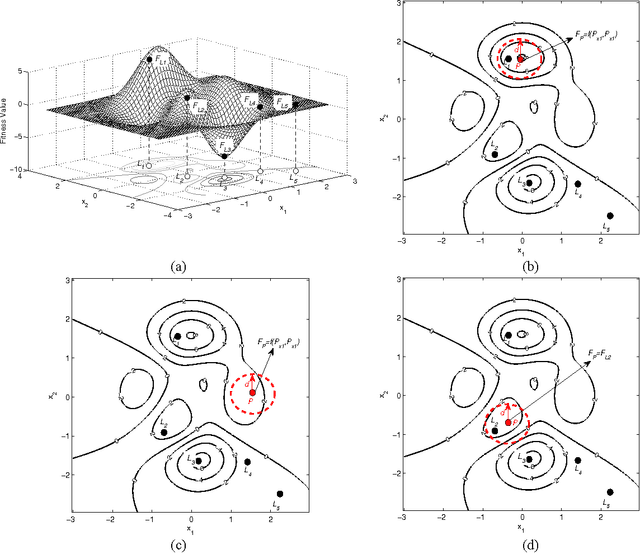

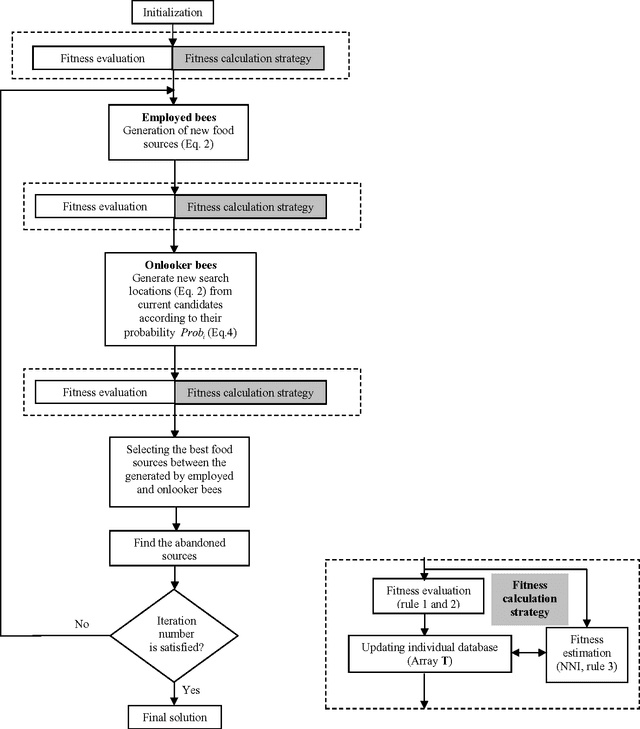
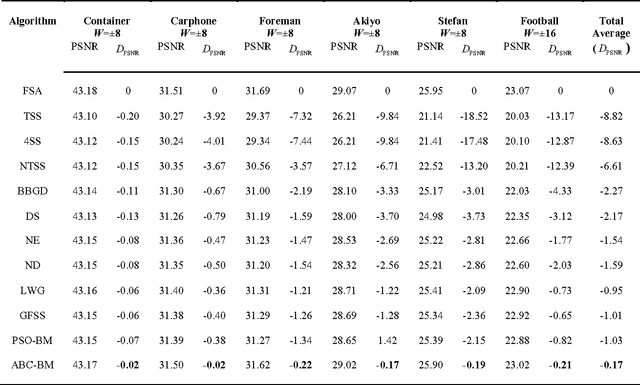
Abstract:Block matching (BM) motion estimation plays a very important role in video coding. In a BM approach, image frames in a video sequence are divided into blocks. For each block in the current frame, the best matching block is identified inside a region of the previous frame, aiming to minimize the sum of absolute differences (SAD). Unfortunately, the SAD evaluation is computationally expensive and represents the most consuming operation in the BM process. Therefore, BM motion estimation can be approached as an optimization problem, where the goal is to find the best matching block within a search space. The simplest available BM method is the full search algorithm (FSA) which finds the most accurate motion vector through an exhaustive computation of SAD values for all elements of the search window. Recently, several fast BM algorithms have been proposed to reduce the number of SAD operations by calculating only a fixed subset of search locations at the price of poor accuracy. In this paper, a new algorithm based on Artificial Bee Colony (ABC) optimization is proposed to reduce the number of search locations in the BM process. In our algorithm, the computation of search locations is drastically reduced by considering a fitness calculation strategy which indicates when it is feasible to calculate or only estimate new search locations. Since the proposed algorithm does not consider any fixed search pattern or any other movement assumption as most of other BM approaches do, a high probability for finding the true minimum (accurate motion vector) is expected. Conducted simulations show that the proposed method achieves the best balance over other fast BM algorithms, in terms of both estimation accuracy and computational cost.
* 22 Pages. arXiv admin note: substantial text overlap with arXiv:1405.4721, arXiv:1406.4484
Circle detection using electro-magnetism optimization
May 30, 2014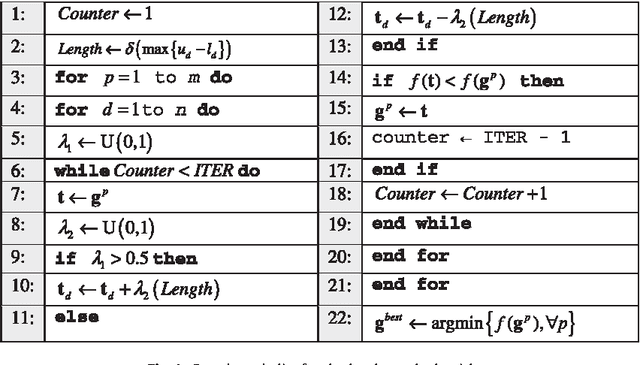

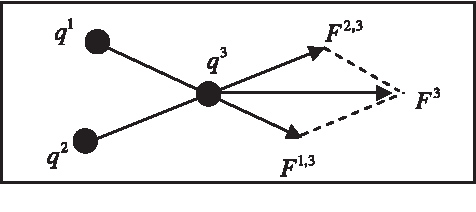

Abstract:This paper describes a circle detection method based on Electromagnetism-Like Optimization (EMO). Circle detection has received considerable attention over the last years thanks to its relevance for many computer vision tasks. EMO is a heuristic method for solving complex optimization problems inspired in electromagnetism principles. This algorithm searches a solution based in the attraction and repulsion among prototype candidates. In this paper the detection process is considered to be similar to an optimization problem, the algorithm uses the combination of three edge points (x, y, r) as parameters to determine circles candidates in the scene. An objective function determines if such circle candidates are actually present in the image. The EMO algorithm is used to find the circle candidate that is better related with the real circle present in the image according to the objective function. The final algorithm is a fast circle detector that locates circles with sub-pixel accuracy even considering complicated conditions and noisy images.
* arXiv admin note: substantial text overlap with arXiv:1405.7362
A Comparison of Nature Inspired Algorithms for Multi-threshold Image Segmentation
May 28, 2014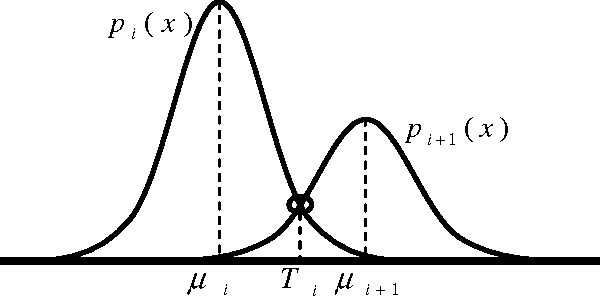
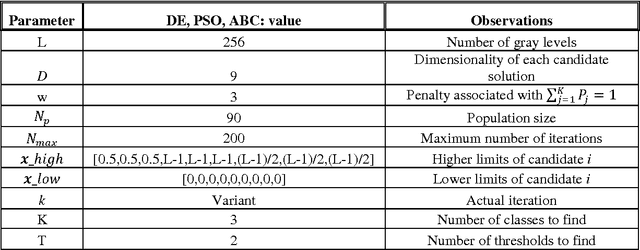

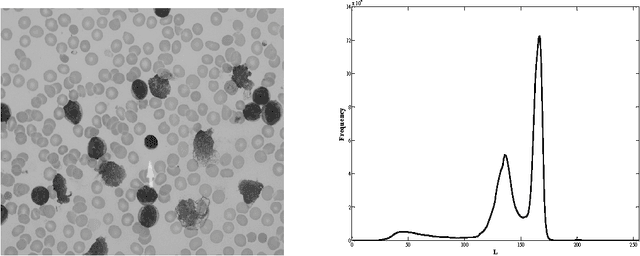
Abstract:In the field of image analysis, segmentation is one of the most important preprocessing steps. One way to achieve segmentation is by mean of threshold selection, where each pixel that belongs to a determined class islabeled according to the selected threshold, giving as a result pixel groups that share visual characteristics in the image. Several methods have been proposed in order to solve threshold selectionproblems; in this work, it is used the method based on the mixture of Gaussian functions to approximate the 1D histogram of a gray level image and whose parameters are calculated using three nature inspired algorithms (Particle Swarm Optimization, Artificial Bee Colony Optimization and Differential Evolution). Each Gaussian function approximates thehistogram, representing a pixel class and therefore a threshold point. Experimental results are shown, comparing in quantitative and qualitative fashion as well as the main advantages and drawbacks of each algorithm, applied to multi-threshold problem.
* 16 pages, this is a draft of the final version of the article sent to the Journal
A Multi-threshold Segmentation Approach Based on Artificial Bee Colony Optimization
May 28, 2014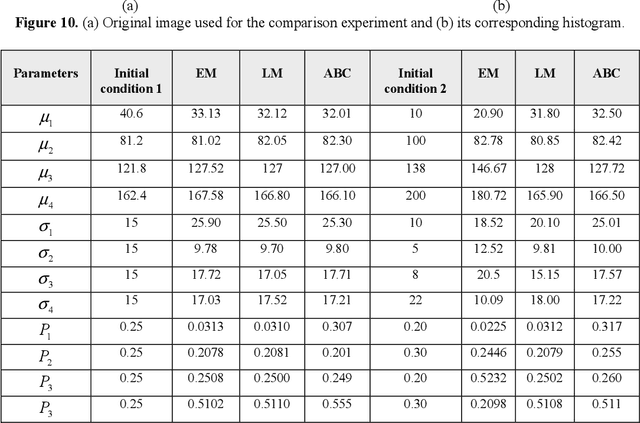
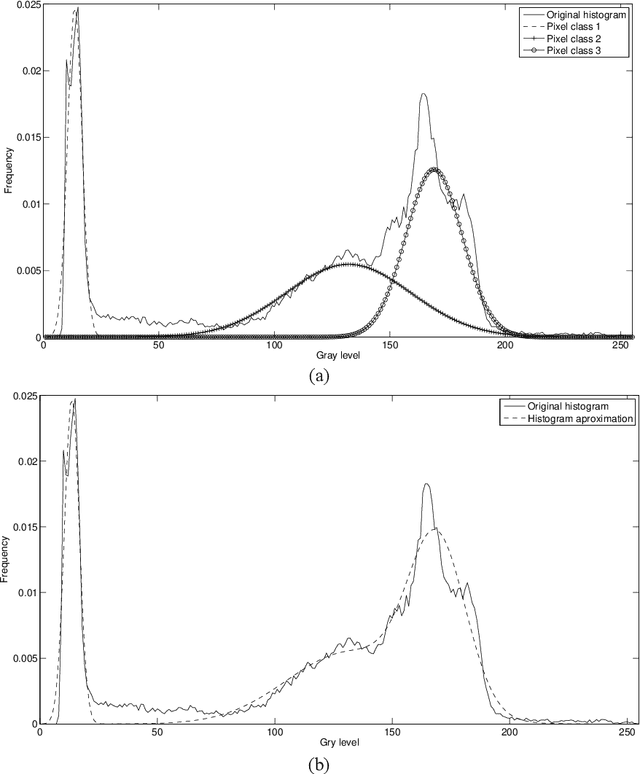
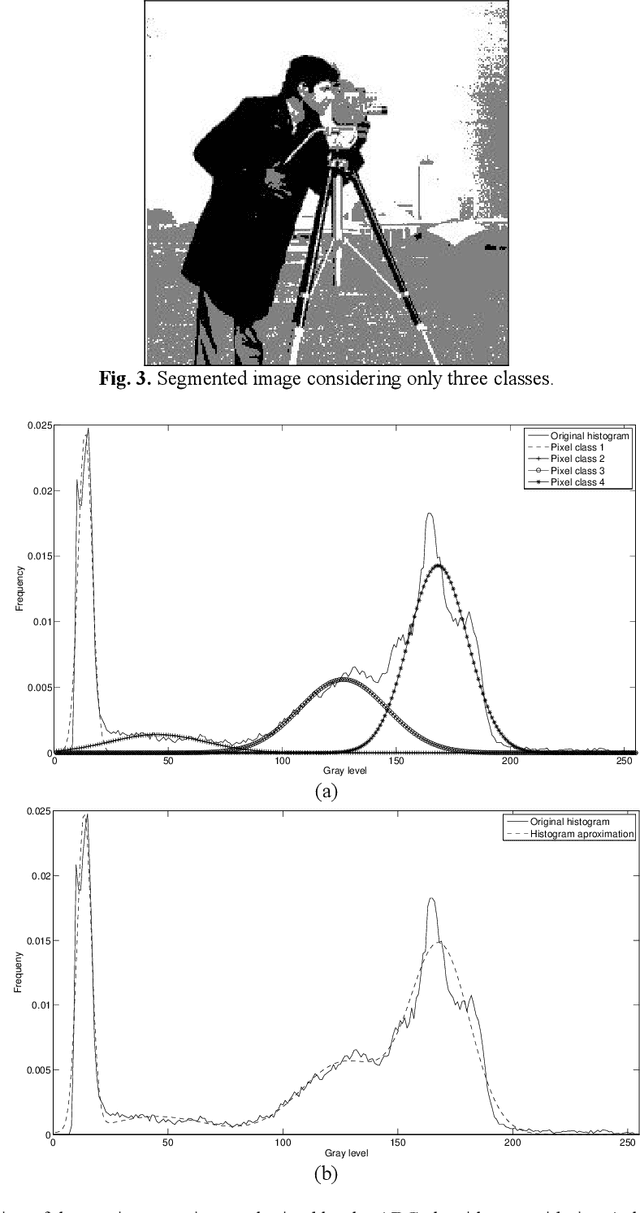
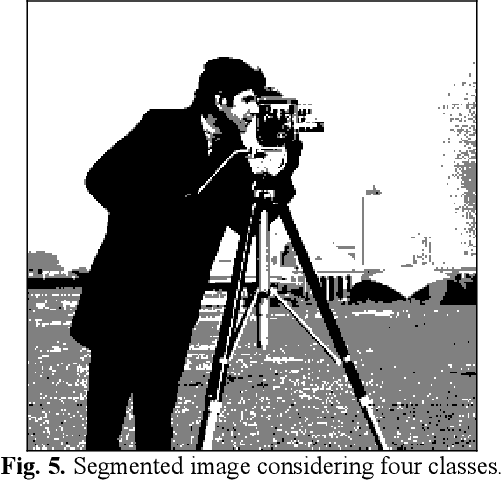
Abstract:This paper explores the use of the Artificial Bee Colony (ABC) algorithm to compute threshold selection for image segmentation. ABC is a heuristic algorithm motivated by the intelligent behavior of honey-bees which has been successfully employed to solve complex optimization problems. In this approach, an image 1D histogram is approximated through a Gaussian mixture model whose parameters are calculated by the ABC algorithm. For the approximation scheme, each Gaussian function represents a pixel class and therefore a threshold. Unlike the Expectation Maximization (EM) algorithm, the ABC based method shows fast convergence and low sensitivity to initial conditions. Remarkably, it also improves complex time consuming computations commonly required by gradient-based methods. Experimental results demonstrate the algorithms ability to perform automatic multi threshold selection yet showing interesting advantages by comparison to other well known algorithms.
* 16 Pages
A new stopping criterion for the mean shift iterative algorithm
Nov 08, 2013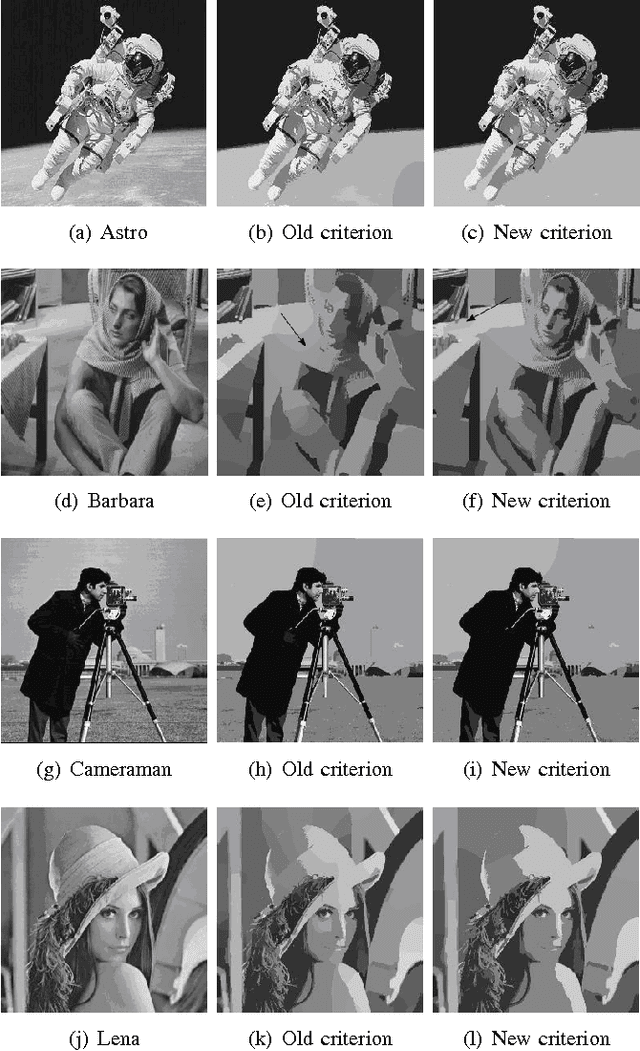
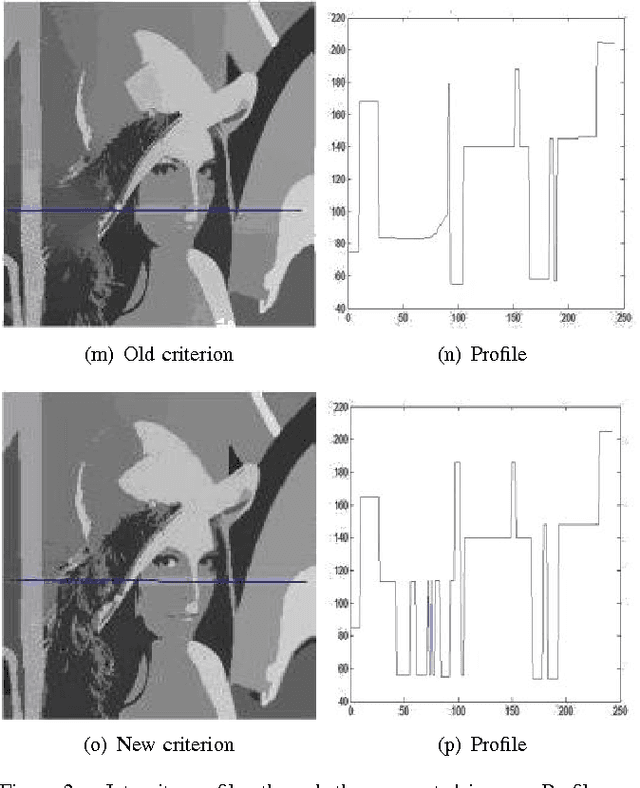
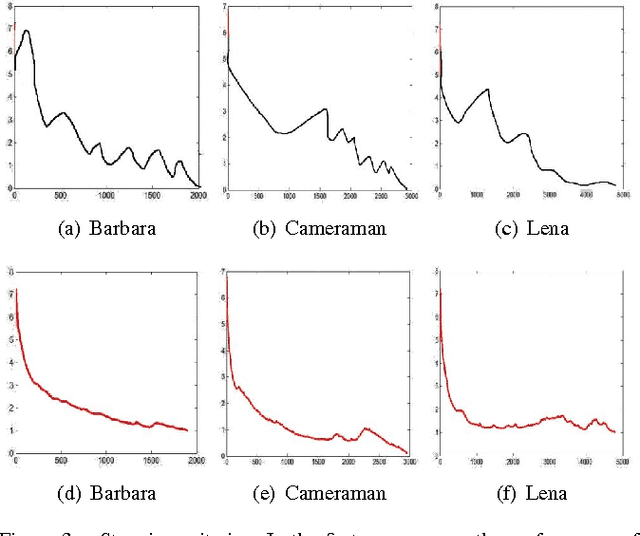
Abstract:The mean shift iterative algorithm was proposed in 2006, for using the entropy as a stopping criterion. From then on, a theoretical base has been developed and a group of applications has been carried out using this algorithm. This paper proposes a new stopping criterion for the mean shift iterative algorithm, where stopping threshold via entropy is used now, but in another way. Many segmentation experiments were carried out by utilizing standard images and it was verified that a better segmentation was reached, and that the algorithm had better stability. An analysis on the convergence, through a theorem, with the new stopping criterion was carried out. The goal of this paper is to compare the new stopping criterion with the old criterion. For this reason, the obtained results were not compared with other segmentation approaches, since with the old stopping criterion were previously carried out.
 Add to Chrome
Add to Chrome Add to Firefox
Add to Firefox Add to Edge
Add to Edge